Understanding Urban Waterfront Regeneration Through the case studies of Baltimore and Seoul
Nirjari Harshal Upadhyay harshal.nirjari.ugfd15@cept.ac.in Student , Bachelors of Interior Design (Code: UI1215) Faculty of Design , CEPT UniversityABSTRACT:
The waterfront area of a city or town is its dockland district, or the area alongside a body of water. Waterfronts have been historical gateways to a city in the past and have been essential for the city's economic development and socio-cultural identity. Post industrialization, due to the change in transport modes, the port cities and its waterfronts have undergone regeneration and have transformed not just physically but also economically. Waterfronts today are one of the most prolific variants of creative cities: dense and hybrid locations where resources, opportunities and aspirations of cities are translated into visions, new relations and projects. These waterfronts act as a public space for people to create, co-create, work and play. They also act as a catalyst for tourism. Waterfronts today have become a spotlight to a city.They have proven to be a successful model for many cities ; Not only does it generate job opportunities for the residents, it gives them a common ground to interact and collaborate.Waterfronts these days consists of various zones : walkways , commercial spaces , residences , community centres etc. These zones vary from city to city in terms of its public : private ratio. Baltimore being the first city to start the regeneration in 1963 , this successful model quickly spreadthrough the country and even pan Asia and Europe. This paper discusses urban waterfronts, its advantages and disadvantages and its socio-economic impact on the city through case studies of Baltimore and Seoul.
KEYWORDS: Impact, waterfront, urban, regeneration, social, economic, city
Introduction

Water is vital renewable resource, although limited Waterfronts are generally defined as a part of the town or city that is in direct contact with a water body ; be it a lake, river, ocean, etc Waterfront regeneration thus means as any large-scale urban renewal project done on any coastline or river
Urban waterfronts have proven to be the central core of cities worldwide They exist in various cities and have the ability to evolve drastically from time to time , and can enormously affect the personality of a city. Urban waterfront regeneration projects have become an effective tool for urban planning and politics an international dimension since 1980's.[1]
These waterfronts not only add as an aesthetic element but also add as a functional element in boosting the city's economy The waterfronts also create job opportunities , form a recreational hub and could be a foundation for water management Baltimore 's Inner Harbour gave birth to this idea of urban waterfront regeneration This paper discuess waterfront regeneration through the case study of Baltimore's Inner Harbour and Seoul Waterfronts
History of Waterfronts
Waterfronts in the ancient history have been cradles to civilizations. The Indus valley civilization being an excellent example; as an entire civilization was born in and around the river Indus. This continued when cities were created and their rivers acted as an important source of water and was also an important part of the city's identity.
Early 1800s
In ancient times, waterfronts acted as a gateway to the city, where, small boats docked themselves; loaded and unloaded goods. In the case of rivers, small boats were used to help people transport from one end to the other. These waterfronts were also used by the citizens as a recreational place. People of the city , then , shared a close relationship with the water bodies.
Industrialisation
Industrialization changed the entire setting. Waterfronts were now used as docklands and ports for goods to come in. It thus changed the entire look of these places and they were no longer an aesthetic element where people could go and sit.
Post Industrialisation
Post Industrialization, due to the introduction of containers into the world of shipping, these docklands and ports required a larger space to function and subsequently moved to the outskirts of the city. The waterfronts were now left void with industrial waste lying around to a great extent.
These empty lands were then decided to be "renewed” or "regenerated” with the idea of creating a public-private place on these waterfronts and creating recreational spaces for the citizens. This would be a non-environment harming idea to these lands and that is how the idea of urban waterfront regeneration was born. This idea initially started in the USA in 1963, Baltimore's Inner Harbour being the first of its kind. The success of this waterfront spread like a wildfire and by 1980s a lot of cities in the USA were following the same module. This module was also globally accepted by Europeans, Australians, Asians etc. They too now wanted their Waterfronts to look like those in the USA, which not only catered to the city for recreation but also generated economy and acted as a tourist attraction.
2000s
"Cities seek a waterfront that is a place of public enjoyment. They want a waterfront where there is ample visual and physical public access - all day, all year - to both the water and the land.Cities also want a waterfront that serves more than one purpose :they want it to be a place to work and to live, as well as a place to play. In other words, they want a place that contributes to the quality of life in all of its aspects : economic, social, andcultural."[2]


Waterfronts today, act as a catalyst for expressing the city's culture and image, attracting people and investment and thus enhancing the local economy. These waterfronts that were once an industrial home ground, have now been transformed into urban recreational areas for people. They involve mixed uses: residential, commercial, retail, service and tourist activities. While Baltimore's Inner Harbour acted as an example in USA, the regeneration of the London Docklands acted as an example in the Europe.
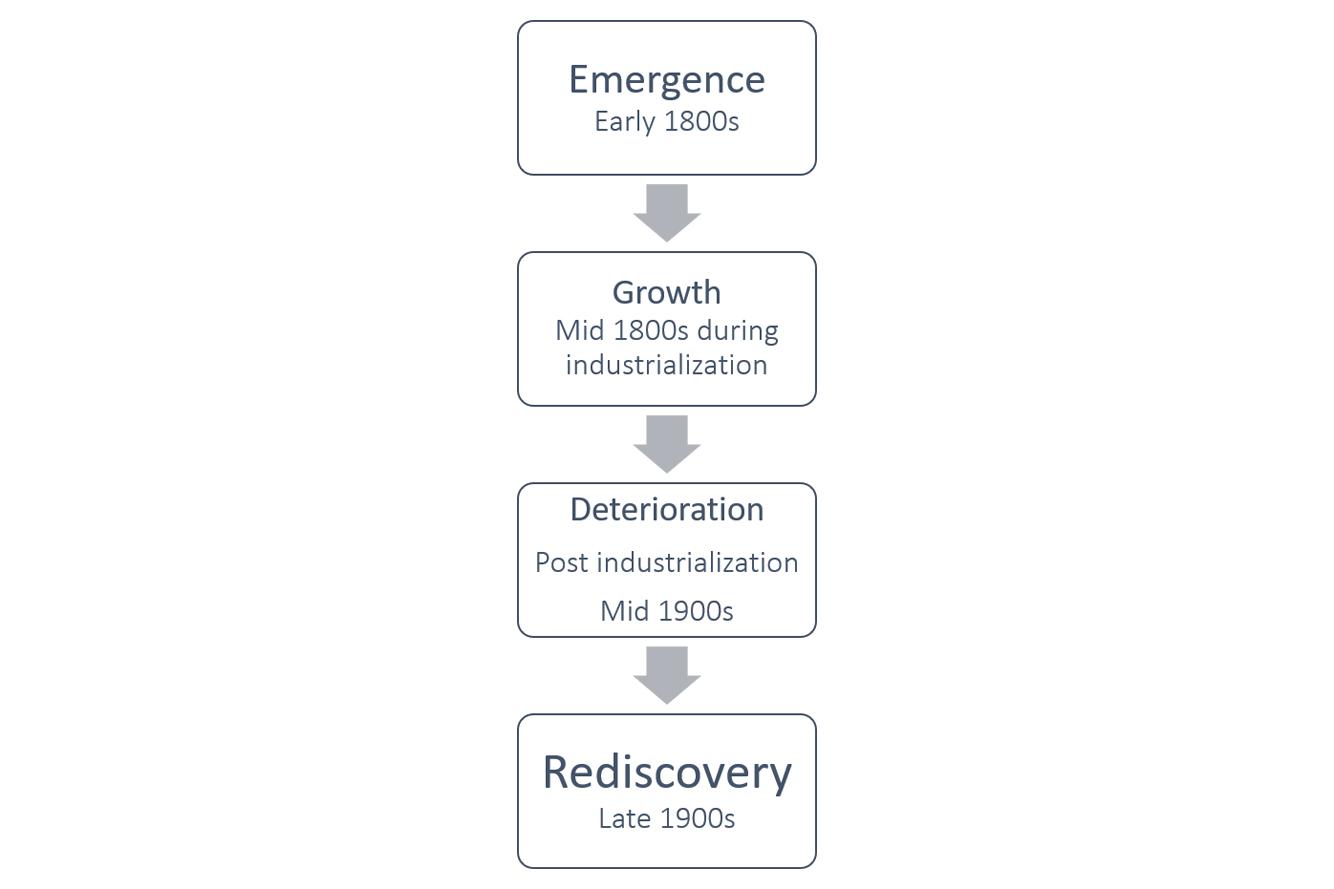
Water as an urban planning element
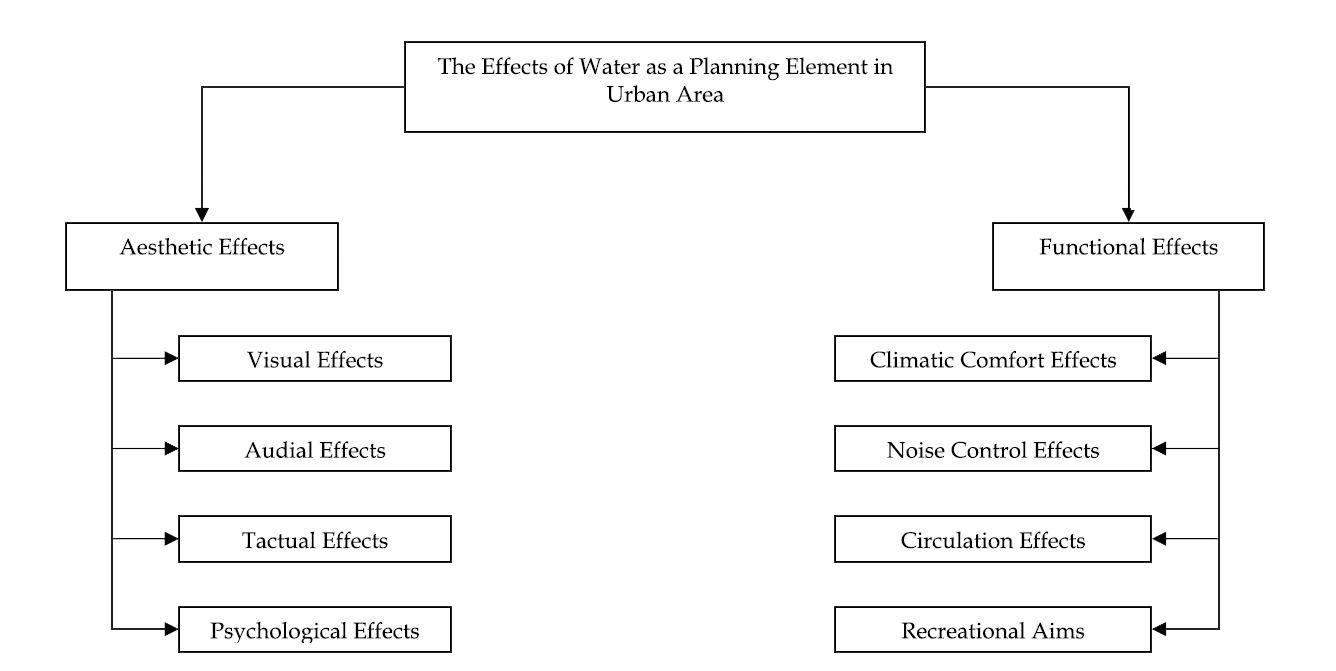
A proper balance between social life and nature if vital for Sustainable development of cities. Water elements in cities help creating that balance. They not just help the city economically but also add up to psychological well being of the people living in the city. These elements create an effect on humans visually , audially and psychologically.
The main reason that pulls in individuals to these water elements is the visual scene of the water that aides in unwinding. Moving water brings liveliness and energy while stale water creates reflections which is a fascination as well.
As a functional element, water surfaces cool the air by means of creating moisture This plays an important role. It helps to decrease the temperature. It also helps in noise control and recreational aims. These water bodies serve as recreational uses for swimming , fishing, boat tours and other entertainments
Advantages of Urban Waterfront Regeneration:
The cost of construction of waterfronts are now cheaper as the land left vacant post industrialization is now just a dumpyard. These places are always prime slots for development and hence give greater returns. These areas have high aesthetic and functional values due to their proximity to the water and city core.Large scale mixed use developments offer numerous business opportunities. These projects venture in restoring the vitality of a city. Other developments are more social. Parks , water-edge walkways and environmental conservation all add to the cultural landscape.
1. Increase in economic investment
2. Attracts visitors not just locally
3. Improvement in water quality due to advance management process
4. Improves City's image
5. Provision of better transport services
6. Boosts land value in and around the waterfront
7. Provides a place for new opportunities and activities
8. Generates jobs
Urban waterfront regeneration elements
Elements of any waterfront are broadly divided into 3 parts :
1. Water dependent uses - activities like boating , fishing , ferry terminal are a part of this.
2. Water related uses - Storage warehouses , Industrial production fields are a part of this.
3. Water independent uses - these activities are neither reliant or related to water. Commercial , residential and recreational places are a part of this type.
Case Study 1 : Baltimore's Inner Harbour , Maryland , USA
United states of America being a peninsula has resulted in a lot of cities having access to water bodies.These water bodies helped boost the economy of USA due to ease of trade as numerous cities had ports and harbours.
Maryland is a Mid-Atlantic state that's defined by its abundant waterways and coastlines on the Chesapeake Bay and Atlantic Ocean. Its largest city, Baltimore, has a long history as a major seaport. The city's Inner Harbor was once the second leading port of entry for immigrants to the United States. In addition,Baltimore was a major manufacturing center.[3]
History
The history of the Baltimore Inner Harbour began in 1729 when the area was discovered. The harbour's first role was for the trade of tobacco from nearby plantations to the harbour[4] The Baltimore Harbour has changed Baltimore City from a little town into a visitor goal.
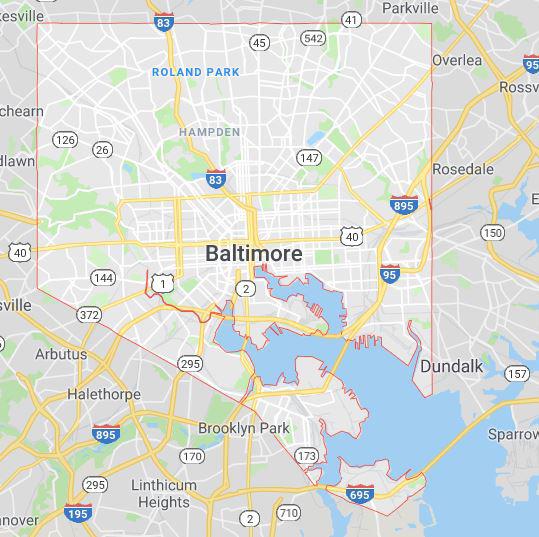
From the earliest of the eighteenth Century, the harbour's vital significance produced generally effective exchange, shipbuilding, canning, and steel businesses. Long stretches of mechanical power, be that as it may, quickly weakened the water conditions, funnels, and foundation, compelling Baltimore into a time of rejuvenation and revamping of the economy.
Today, Baltimore's Inner Harbour drives the visitor business that the city has come to depend on. This dependence on the travel industry requires a sound harbor to keep up and extend Baltimore's allure as a recreational and profitable goal.
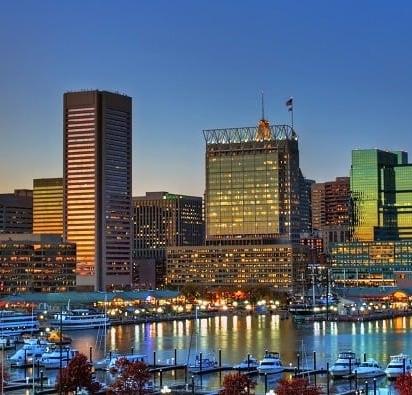
Planning
The entire project planning began in 1958 due to the need of the hour to revamp the old harbour. In different phases , this project finally formulated in 1963 and fully completed in 1968. The Plan was to develop the harbour in 3 phases. The first one was to construct sites for office buildings along Pratt Street facing the waterfront. Second, creating multifamily housing in the eastern and western area. The third took place within the centre, namely the public playground for Baltimoreans along the shoreline of the inner harbour. The third phase was to redesign the streets which were now converted into wide boulevards. Pedestrian walking and paths for cycling were added to the roads.
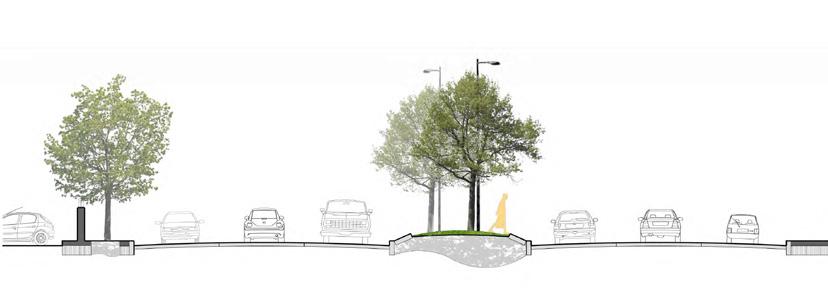
Towards the end, the last phase focused on making the public spaces attractive. This was done to increase tourism and public involvement. Boats for residential and commercial purposes were planned and docked. A submarine and seaside steamer from the World War II time period were refurbished into eateries, and added to the scene to build attractions.
This process of regenerating and changing the look and function of the waterfront port began after it was founded in the year 1729. During that time period, it was used for trading, until the port was abandoned. Post that an urban renovation was required in the 1950s which finally led to a successful operation in 1984.

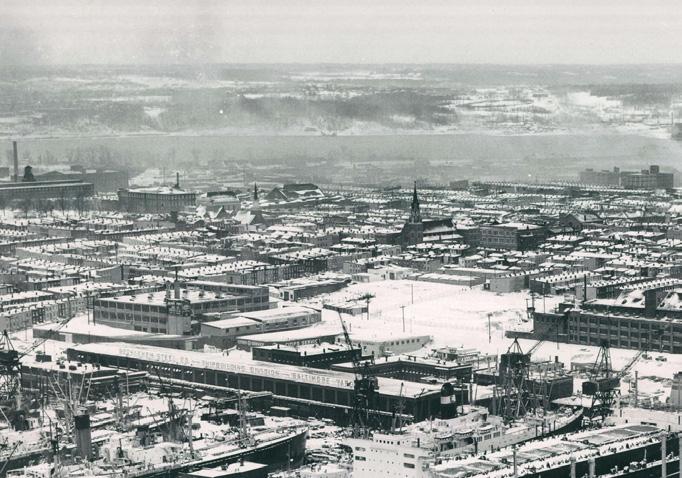
Impact on the city
Regeneration of the Inner Harbour gave a new face to Baltimore. There was a decrease in population in the years prior to the harbour’s revitalisation and this new face helped increase its citizens. Even today the harbour continues to change with the changing times. The harbour ticks all the boxes for generation of recreational spaces, tourism and commercial hubs. The promenade acts as a main pedestrian pathway and connects the entire harbour. The Inner Harbor has been effective at absorbing with the encompassing city, especially its encompassing neighborhoods and the midtown. The development of the Camden Yards Sports Complex and Power Plant Live! at walking distance from theharbor have helped draw tourists and guests into the urban texture of the city. The Harbour continues to generate opportunities and thus help in the economic growth of the city.

Case Study 2 : The Cheonggyecheon Canal in Seoul , South Korea
History
South Korea is an Asian country that has suffered through enigmatic issues for over hundred years. Firstly under the rule of China and then of Japan , Korea always was a buffer state and never got the chance to develop. Post independence , the world war II left the country underdeveloped. It was only a small span of time until the Korean war happened and left both north and south korea in rubbles and under military rule for a large amount of years.
Hence , South Korea only very recently began its developing journey, Seoul being at its epicentre. This led to huge transfer of people from the countryside to Seoul in search of jobs to earn for their living. Huge population resulted in enormous roadways.
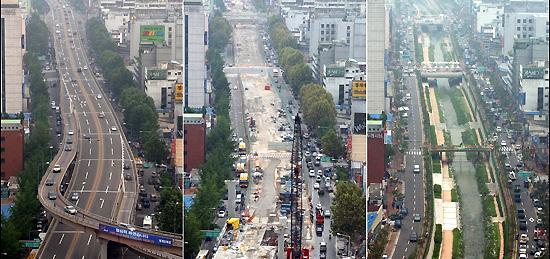
One of those developments led to a 6-lane highway on top of the Cheonggyecheon river.The highway led to the stream turning into a drainage line and a dumpyard. It only resulted in being a flood channel and had no other use.It was only a matter of time that the government realized something required to be done.
The Cheonggyecheon task is noteworthy for its sensational change from an undesirable industrial blemish to a nature-filled open space.
Key Elements
1. Expulsion of the highway.
2. Daylighting of a recently secured urban stream.
3. Making of a broad new open space along the daylighted stream.
4. Making of pedestrian ways and recreational spaces such as plazas and theme based spaces.
5. Development of 21 new bridges, reconnecting the urban texture.
6. A museum depicting the history and construction of this project.
Impact on the city
This project impacted the city in huge amounts. Not only did it decrease pollution , it increased biodiversity in the city exponentially. The Urban park hosts 64,000 visitors a day. This has also resulted in increase in use of public transports by the citizens and thus decrease of vehicles in the vicinity. A remarkable increase of 76% in pedestrian activity has been observed. The project provides a huge amount of flood protection to the city. Urban heat island effect reduced the temperature around the stream by a remarkable 3°C.
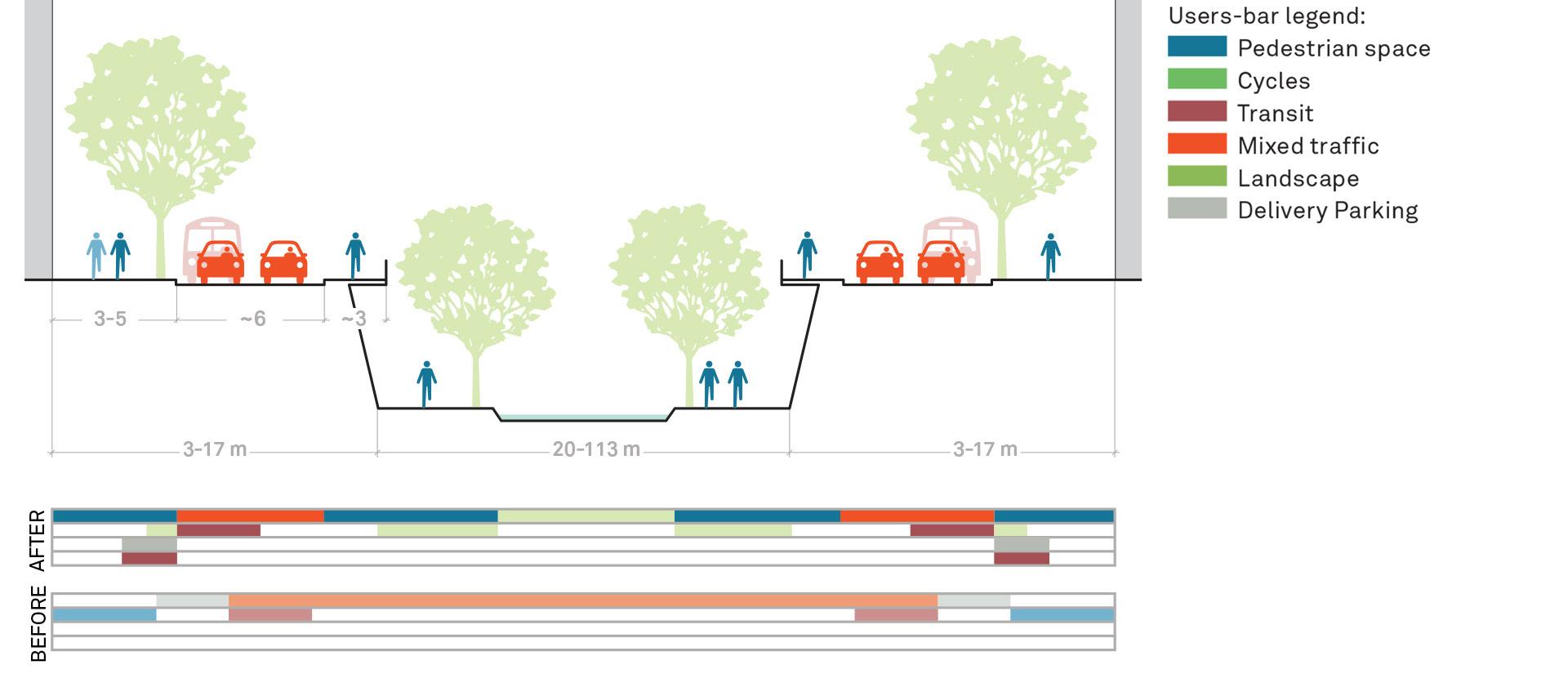
The city has benefited economically due to increase in visitors and local tourists. The citizens have been provided with job opportunities and thus the local economy has been boosted. Land prices have increased around the stream.
In the history of river restoration projects, the Cheonggyecheon is considered to be a highly extortionate project. Due to its grand success, this project has now become a national policy and there are plans to implement similar projects in the entire country. Being ‘first of its kind’, the project has a museum to its glory.
Conclusion
Urban waterfront regeneration projects these days act as money minting strategy for cities. Not only do they boost the local economy , it helps put these cities put themselves into the tourism map. It helps change the look of the city.Locally it helps increase public transport and pedestrian path usage.
Socially , these projects help create common grounds for people to interact and enjoy. They provide ecological backgrounds.These water places help people to stress-burst , socialize and mental peace.
Politically , such projects are marketed as a succee of their political tenure as a government and hence these projects will and always be in the government’s to-do lists.
Hence, these projects prove to be an all-round advantage to a city , provided the designs do not harm the planet ecologically.
Bibliography :
1. Assessing social impacts in urban waterfront regeneration Rauno Sairinen-Satu Kumpulainen - Environmental Impact Assessment Review - 2006
2. Urban Waterfront Regenerations
Umut Pekin - Advances in Landscape Architecture - 2013
3. Policies and Practicalities for Enabling Smart Water Smart Water Technologies and Techniques - 2018
Websites :
1. How the Cheonggyecheon River Urban Design Restored the Green Heart Of Seoul
Lucy Wang - https://inhabitat.com/how-the-cheonggyecheon-river-urban-design-restored-thegreen-heart-of-seoul/
2. Baltimore Waterfront https://www.baltimorewaterfront.com/
3. Case Study: Cheonggyecheon; Seoul, Korea
Social Ink - https://globaldesigningcities.org/publication/global-street-design-guide/streets/ special-conditions/elevated-structure-removal/case-study-cheonggyecheon-seoul-korea/
Image Credits :
1. [Img 1] https://waterfrontoronto.ca/nbe/portal/waterfront/Home/waterfronthome/about-us/ history-and-heritage
2. [Img 2] http://bcplanningblog.blogspot.com/2009/03/my-fair-city-of-baltimore.html
3. [Img 3] http://maps.google.com
4. [Img 4] https://wellspringsearch.com/baltimore-seo-agency/baltimore-inner-harbor-sunset/
5. [Img 5] https://www.baltimorewaterfront.com
6. [Img 6] https://www.baltimorewaterfront.com
7. [Img 7] https://www.baltimorewaterfront.com
8.[img 8] https://baltimore.org/article/baltimore-inner-harbor
9.[img 9] http://koreabridge.net/post/korea-now-and-then-cheonggyecheon10%EC%B2%AD%EA%B3%84%EC%B2%9C-intraman
10.[Img 10] Case Study: Cheonggyecheon; Seoul, Korea
Social Ink - https://globaldesigningcities.org/publication/global-street-design-guide/streets/special-conditions/elevated-structure-removal/case-study-cheonggyecheon-seoul-korea/
